32nd São Paulo Biennial
Incerteza Viva (Live Uncertainty)
07 Sep - 11 Dec 2016

Antes arte do que tarde, 1977. Performance ritual. Registro
de ação no Instituto Cultural Brasil-Alemanha (ICBA), Salvador, Brasil (1977).

Untitled (El Quisco), 2013. Fabric and thread.
4 panels, 200 × 120 cm (each). Installation view of the exhibition Ways of Working: The Incidental Object at the Fondazione Merz, Turin, Italy (20132014).

Geometria do acidente [Geometry of the Accident], 2014.
Wood, drywall, latex paint and footbridge. Installation view at Pivô, São Paulo, Brazil (2014).
© Everton Balardin
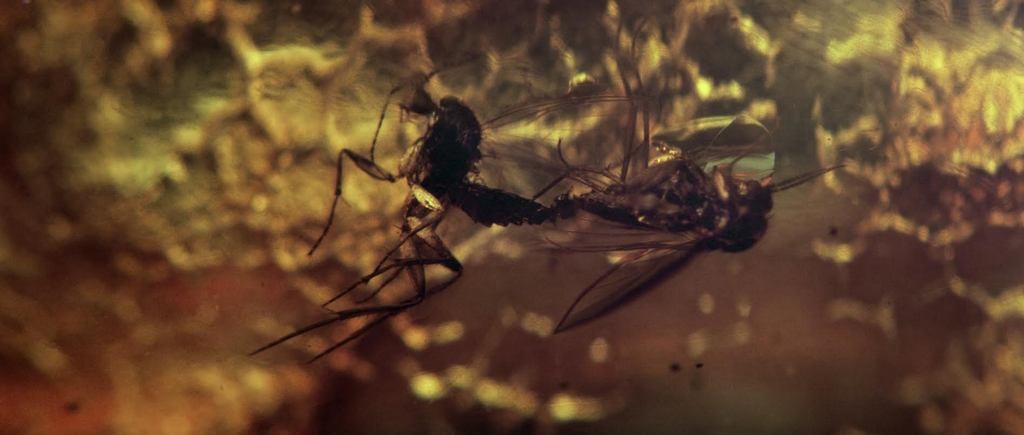
DeExtinction, 2016
Film, colour, stereo, sound. 12’38”. Support: Consulado Geral da França em São Paulo; Institut Français.

Mangwano Olshara Thipa Kabhaleng [The Child's Mother
Holds the Sharp Side of the Knife], 1987-1988.
Acrylic on canvas.
186.5 × 280 cm.

Un Autre livre rouge I [ Another Red Book I], 1973. (ex. one of a kind) 164p.; 47 × 35 cm. 82 sheets of white cardboard and various shades of red, with various thicknesses; all sheets with collages whose common theme is the “red” (clippings from newspapers and magazines, postcards, packaging paper, photocopies with text excerpts); 2 serigraphs: s. 56 ex. 39/50, 1968
and s. 58 ex. 14/35, n.d. Packed in a carton cover, red, tied by two ribbons. Signed. Artist’s collection; Fundação Calouste
Gulbenkian Biblioteca
de Arte. Support: Fundação Calouste Gulbenkian; Direção Geral das Artes.
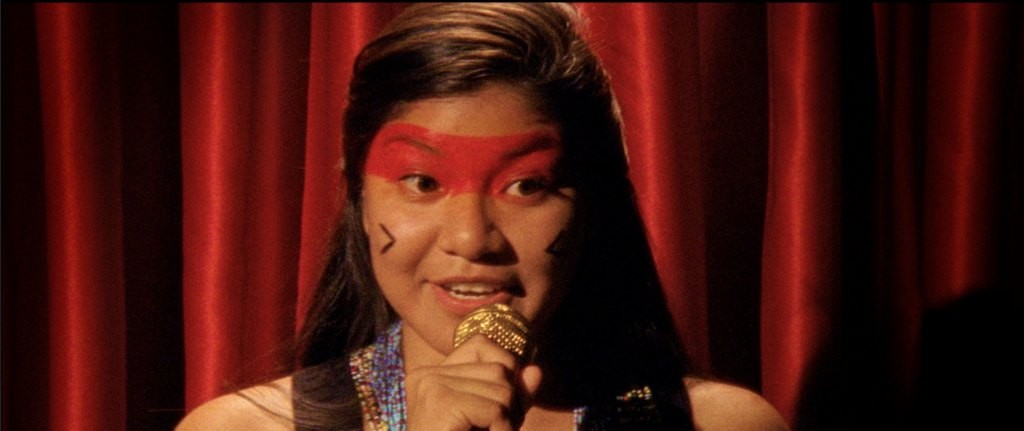
The Artificial Humours , 2016. S16mm transferred to HD. 30’. Support: Fundação de Serralves; Coleccíon Inelcom; Fundação Calouste Gulbenkian; DireçãoGeral
das Artes. Commissioned by the Fundação Bienal de São Paulo for the 32nd Bienal
(2016). Presentation produced in partnership with SescSP.
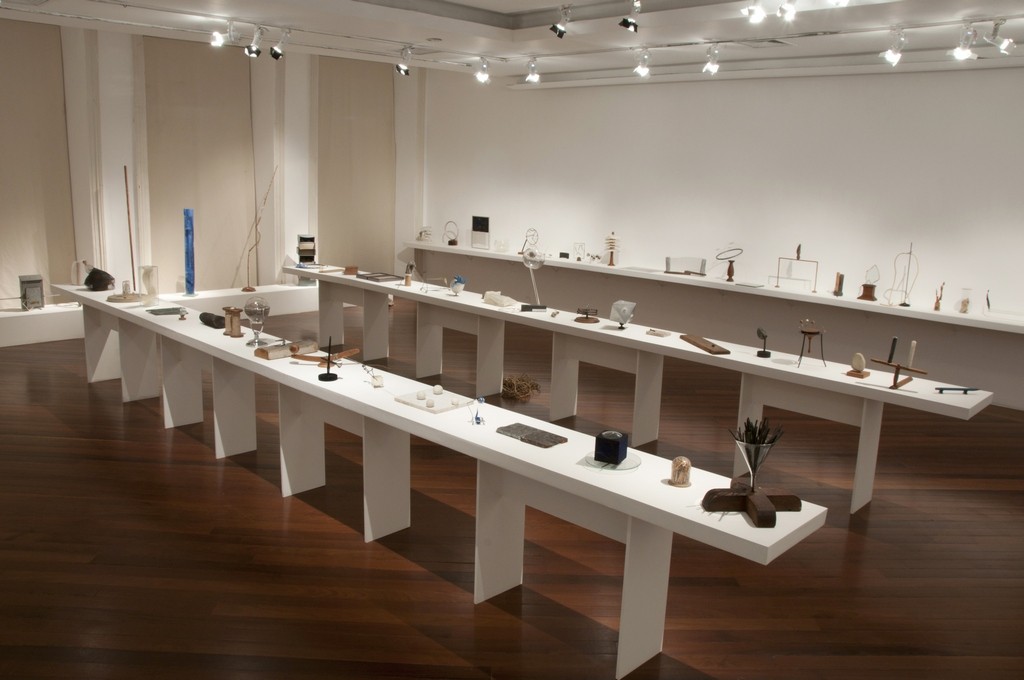
Hydragrammas, 1978-1993.
Set composed of approx. 100 objects and their reproductions in slide and a word in Portuguese or French. Dimensions variable. Presentation produced in partnership with SescSP.
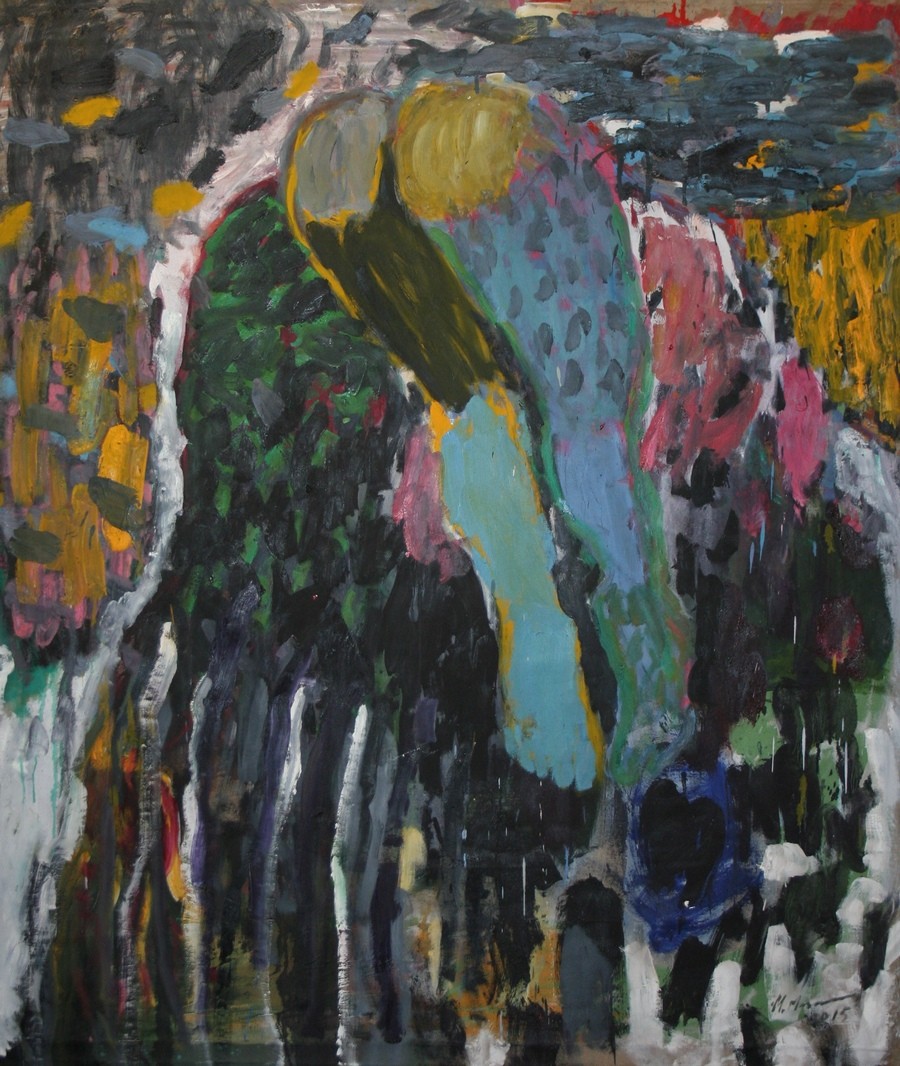
Bottoms Up [Virada], 2016
159 x 136 cm
oil on canvas
courtesy: the artist
photo Misheck Masamvu
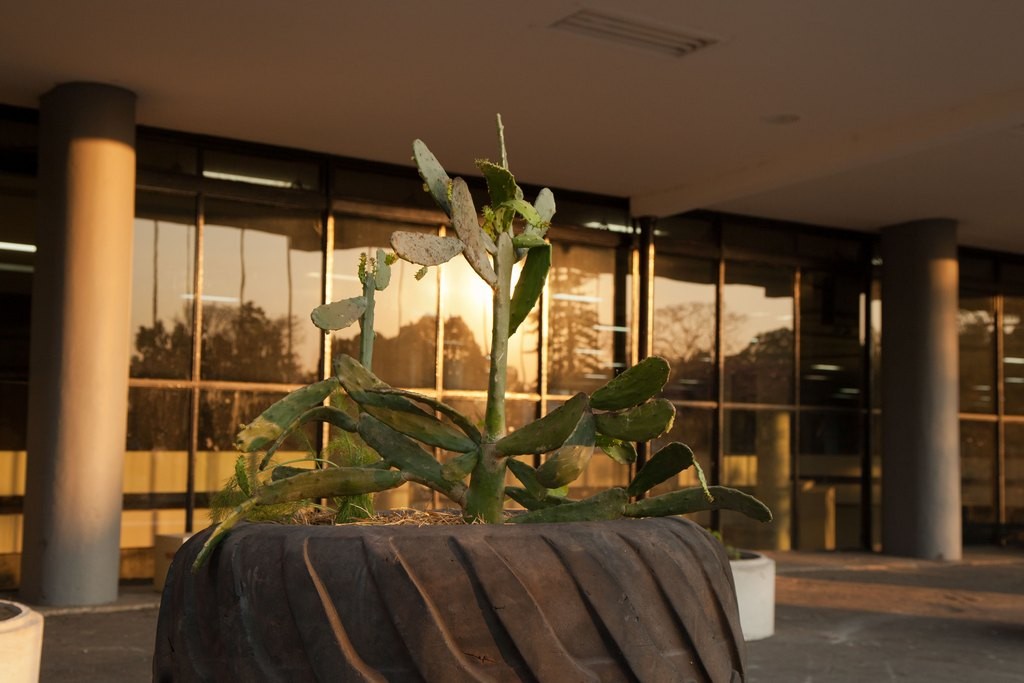
Migração, exclusão e resistência [ Migration, Exclusion and Resistance], 2016. Installationmade of plastic canisters, metal barrels, concrete ring with two different measures, tires, unconventional food plants and popular plants.
Dimensions variable. Support: Fundação Calouste Gulbenkian; Trelleborg Wheel Systems; DireçãoGeral das Artes. Acknowledgments: Peter Webb, Vera Pezzini, Pedro Coelho, Mafê Vieira, Rafael Flaborea, Pedro Allioto.
Commissioned by the Fundação Bienal de São Paulo for the 32nd Bienal (2016). Presentation produced in partnership with SescSP.
INCERTEZA VIVA (Live Uncertainty)
Curators: Jochen Volz, Gabi Ngcobo, Júlia Rebouças, Lars Bang Larsen and Sofía Olascoaga
In praise of uncertainty, the 32nd Bienal de São Paulo bets on the power of art
Conceived of as a garden, Live Uncertainty occupies the Bienal
Pavilion until December 11 with 70% of its projects commissioned
The 32nd Bienal de São Paulo: Live Uncertainty is a collective process that began a year ago with the involvement of teachers, students, artists, activists, indigenous leaders, educators, scientists and thinkers in Brazil and abroad. But it is also a collective process that is about to begin. Curated by Jochen Volz and co-curators Gabi Ngcobo (South Africa), Júlia Rebouças (Brazil), Lars Bang Larsen (Denmark) and Sofía Olascoaga (Mexico), the exhibition will be held from September 7th to December 11th, 2016 at the Ciccillo Matarazzo Pavilion, featuring approximately 340 works by 81 artists and collectives and seeking to reflect on the possibilities offered by contemporary art to harbor and inhabit uncertainties.
Just as art unites thought and practice, reflection and action, the real wealth of Live Uncertainty will only emerge through visitors' encounter with the works, performances and public programs at the Bienal over the upcoming months. “Today the Bienal's role is to act as a platform which actively promotes diversity, freedom and experimentation, at the same time exercising critical thought and proposing other possible realities,” suggests Volz.
Works and directions
Eager to outline cosmological thought, environmental and collective intelligence and systemic and natural ecologies, Live Uncertainty is assembled like a garden in which themes and ideas freely intertwine into an integrated whole. It is not organized into chapters, but fundamentally based on the dialogues between different art works.
The exhibition looks to a series of historical artists who have provided a set of strategies which might appear particularly relevant today: the visual poetics of Wlademir Dias-Pino, Öyvind Fahlström's pioneering experiments with concrete poetry, Lourdes Castro's investigations of immateriality, Víctor Grippo's search for metaphysical transformations and Frans Krajcberg's continuing cry for the health of the planet, with sculptures made of coconut tree trunks and mangroves that articulate the entrance to the exhibition on the ground floor.
However, most of the artistic projects were commissioned specifically for the 32nd Bienal, not to illustrate a theoretical or thematic framework, but to expand the creative principles of uncertainty in many different directions.
A number of works look directly at nature and biological, botanical and alchemical processes: the mushroom laboratory created by Nomeda and Gedeminas Urbonas, the drawings, films, and collages developed by Carolina Caycedo based on a ressearch about hydroelectric plants and dams, and the installation with projections and physicochemical experiments by Susan Jacobs. At the same time, a gaze at historical narratives guides the paintings of Mmakgabo Helen Sebidi, the never-before-seen presentation of a selection of archives from the collective Vídeo nas Aldeias; Lais Myrrha's work on indigenous and urban methods of construction and Rita Ponce de León's sculpture, to name but a few examples.
A critical examination of political, economic and mediatic structures of power and representation is at the heart of the work by Hito Steyerl, whose video-installation Hell Yeah We Fuck Die (2016) is based on the five most popular words in the English song titles of this decade, and the studies on gender and discourse that guide the work of Henrik Olesen, Katia Sepúlveda and Luiz Roque, among others. Also included in the exhibition are works that trigger the imagination and test alternative paths for the future, such as Ágora: OcaTaperaTerreiro by Bené Fonteles – a space for celebrations and rituals involving musicians, shamans, educators and the public – or Oficina de Imaginação Política [Workshop of Political Imagination], a set of work sessions, presentations and debates coordinated by Amilcar Packer.
The 32a Bienal de São Paulo sees itself as permeable and accessible, participating in the ongoing construction of Ibirapuera Park as a public space and expanding its sense of community. Titled ARROGATION, Koo Jeong A's installation is a skate ramp built inside Ibirapuera Park and intended for public use, inviting skateboarders to new experiences of displacement and experimentation in the space. Conceived of by Jorge Menna Barreto in partnership with networks of sustainable food production such as agroforests, organic farmers and systems dedicated to replenishing soil and biodiversity, Restauro is a work of art that functions as a restaurant inside the exhibition whose menu is based on plants. In this way, the garden becomes a model, both metaphorically and methodologically, with a variety of spaces that favor experience and activation.
PARTICIPATING ARTISTS AND COLLECTIVES
Alia Farid. Alicia Barney. Ana Mazzei. Anawana Haloba. Antonio Malta Campos. Bárbara Wagner & Benjamin de Burca. Bené Fonteles. Carla Filipe. Carlos Motta. Carolina Caycedo. Cecilia Bengolea & Jeremy Deller. Charlotte Johannesson. Cristiano Lenhardt. Dalton Paula. Dineo Seshee Bopape. Donna Kukama. Ebony G. Patterson. Eduardo Navarro. Em’kal Eyongakpa. Erika Verzutti. Felipe Mujica. Francis Alÿs. Frans Krajcberg. Gabriel Abrantes. Gilvan Samico. Grada Kilomba. Güneş Terkol. Heather Phillipson. Henrik Olesen. Hito Steyerl. Iza Tarasewicz. Jonathas de Andrade. Jordan Belson. Jorge Menna Barreto. José Antonio Suárez Londoño. José Bento. Kathy Barry. Katia Sepúlveda. Koo Jeong A. Lais Myrrha. Leon Hirszman. Lourdes Castro. Luiz Roque. Luke Willis Thompson. Lyle Ashton Harris. Maria Thereza Alves. Mariana Castillo Deball. Maryam Jafri. Michael Linares. Michal Helfman. Misheck Masamvu. Mmakgabo Helen Sebidi. Naufus Ramírez-Figueroa. Nomeda & Gediminas Urbonas. Oficina de Imaginação Política. OPAVIVARÁ!. Öyvind Fahlström. Park McArthur. Pia Lindman. Pierre Huyghe. Pilar Quinteros. Pope.L. Priscila Fernandes. Rachel Rose. Rayyane Tabet. Rikke Luther. Rita Ponce de León. Rosa Barba. Ruth Ewan. Sandra Kranich. Sonia Andrade. Susan Jacobs. Till Mycha (Helen Stuhr-Rommereim & Silvia Mollicchi). Tracey Rose. Ursula Biemann & Paulo Tavares. Víctor Grippo. Vídeo nas Aldeias. Vivian Caccuri. Wilma Martins. Wlademir Dias-Pino. Xabier Salaberria
